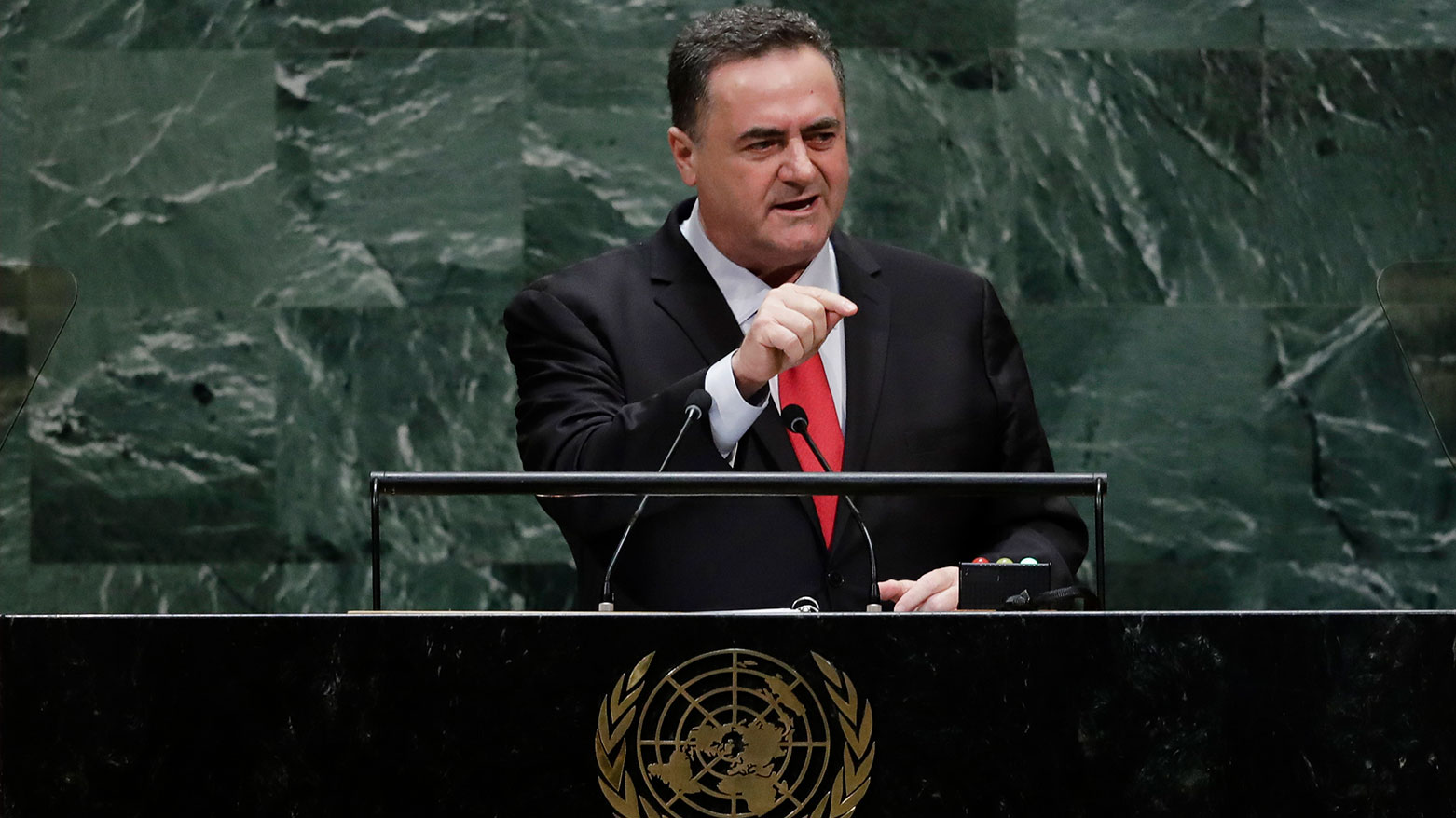Israeli DM Katz: ‘Israel Will Not Allow a Palestinian State’
Israeli DM Israel Katz rejected the U.S. UNSC draft on Gaza, saying "the IDF will remain at the peak of Mount Hermon and in the security zone."

ERBIL (Kurdistan24) — A Day before the United Nations Security Council moves toward a decisive vote on the U.S.-drafted resolution endorsing President Donald Trump’s Gaza peace plan, Israeli Defense Minister Israel Katz issued a sharp rejection of the text’s latest wording, declaring that Israel “will not allow a Palestinian state,” even as Washington inserted language referencing possible future statehood.
In a post on X, Katz said Israel’s position is “clear,” adding that no Palestinian state would be recognized and that the Israeli army would maintain strategic depth in northern and southern theatres.
“Israel will not allow a Palestinian state. The IDF will remain at the peak of Mount Hermon and in the security zone. Gaza will be de-fortified down to the last tunnel, and Hamas will be disarmed in the yellow side by the IDF and in the old Gaza by the international force — or by the IDF,” Katz wrote.
מדיניות ישראל ברורה: לא תקום מדינה פלסטינית.
— ישראל כ”ץ Israel Katz (@Israel_katz) November 16, 2025
צה"ל יישאר בפסגת החרמון ובאזור הביטחון.
עזה תפורז עד למנהרה האחרונה והחמאס יפורק מנשקו בצד הצהוב על ידי צה"ל ובעזה הישנה על ידי הכוח הבינלאומי - או על ידי צה"ל.
His remarks came amid global debate over Washington’s push for the Security Council to formally endorse Trump’s plan and authorize an International Stabilization Force (ISF) that would operate in the enclave.
Diplomats confirmed that the 15-member Council will vote Monday on the U.S. resolution, which aims to consolidate the ceasefire that ended the two-year war between Israel and Hamas and establish a transitional structure for Gaza.
A draft seen by AFP states that the Council “welcomes the establishment of the Board of Peace,” a temporary governing body that Trump would theoretically chair until the end of 2027. The text also authorizes member states to form a “temporary International Stabilization Force (ISF)” to secure border areas alongside Israel, Egypt, and newly trained Palestinian police.
Unlike earlier versions, the final U.S. draft mentions the possibility of a future Palestinian state — a significant shift that sparked Israel Katz’s reaction and introduced new political pressure on Washington’s closest regional ally.
On Friday, the United States, Qatar, Egypt, the UAE, Saudi Arabia, Indonesia, Pakistan, Jordan, and Türkiye issued a joint statement urging the Council to “swiftly” adopt the resolution, calling it essential for stabilizing the ceasefire and launching the transitional framework.
But Russia has circulated a competing proposal that does not endorse the Board of Peace and does not approve immediate deployment of an international force. The Russian draft recognizes the two-state principle more explicitly and instructs the UN Secretary-General to explore options for a stabilization force instead of mandating one.
Moscow said Washington failed to give proper regard to the two-state principle in its text, arguing that its alternative incorporates it more directly.
The White House has warned that rejecting its proposal carries serious risks.
“Any refusal to back this resolution is a vote either for the continued reign of Hamas terrorists or for the return to war with Israel,” U.S. Ambassador Mike Waltz wrote, stressing that delay would “come with a real human cost.”
Military planning documents seen by The Guardian reveal that the United States is preparing for a long-term geographic division of Gaza, despite Trump’s promise of future Palestinian rule across the strip.
The U.S. model divides Gaza into:
-A “green zone” under Israeli and international military control, where reconstruction would start.
-A “red zone” encompassing most Palestinian population areas, to remain in ruins without immediate rebuilding.
Foreign troops would initially be deployed in eastern Gaza along the existing Israeli-controlled “yellow line,” where Hamas is reasserting authority under the ceasefire.
Earlier U.S. concepts for fenced “Alternative Safe Communities” (ASC) — small compounds for civilian relocation — have been dropped, though humanitarian agencies say they have not been notified of any updated plans. Aid groups, facing unprecedented levels of destruction, warn that a divided Gaza risks falling into a prolonged limbo: “not war but not peace.”
More than 80% of Gaza’s buildings, schools, and hospitals have been destroyed. Israel continues restricting materials it deems dual-use, leaving millions in the red zone without shelter, water, or essential supplies.
Trump’s 20-point plan relies on deployment of the ISF, but documents from U.S. Central Command outline troop contributions widely viewed by diplomats as unrealistic:
1-Up to 1,500 British infantry
2-Around 1,000 French soldiers
3-German, Dutch, and Nordic units for hospitals and logistics
4-A Jordanian role involving hundreds of infantry and up to 3,000 police officers
Diplomats say political realities make such commitments unlikely. Jordan’s King Abdullah has already ruled out sending troops, citing high domestic political risks. Several European governments remain unwilling to deploy soldiers after two decades of conflict in Iraq and Afghanistan.
American planners envision reconstruction in the green zone as a way to draw civilians gradually across the Israeli line of control, but nearly the entire population — more than 2 million people — remains trapped in the devastated red zone.
Without a defined political mechanism or clear timeline for Israeli withdrawal, mediators warn that Gaza may remain divided, unstable, and cut off from meaningful Palestinian governance.
The upcoming Security Council vote is shaping into a test of Trump’s model for Gaza’s “day after,” a challenge to Russia’s competing vision, and now — after Katz’s statement — a direct confrontation over the possibility of a Palestinian state.
As Washington seeks international backing for its transition plan, Israel’s rejection of statehood language introduces a new fault line within the camp supporting the ceasefire framework.
With the enclave facing unprecedented devastation, and international consensus fraying over the way forward, Monday’s vote could determine whether Gaza moves toward a structured transition — or toward deeper uncertainty.
